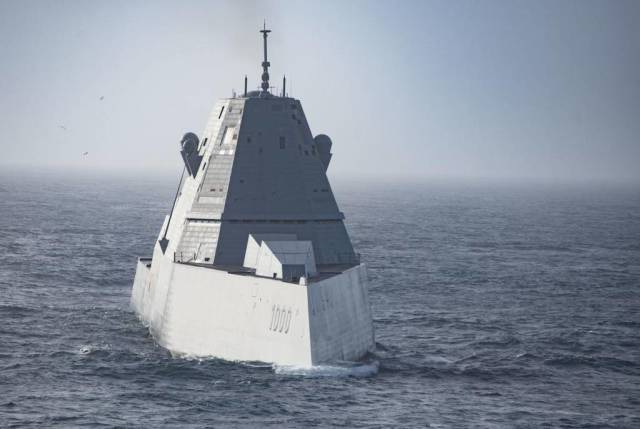Pentagon hypersonic military technology tests failed 3 times in a row
To date, the United States has more than half a dozen hypersonic weapons systems in development, but none of them have been put into the field.
In 2017 and 2019, Russia and China, respectively, deployed their first hypersonic capabilities, with other nations, such as North and South Korea, France, Japan, Australia and India, researching the new class of weapons.
For the third time in a row, Lockheed Martin (giant of the US military branch) failed to launch a new hypersonic missile for the US Air Force. The situation has brought concern and embarrassment to the Pentagon and Congress because it is not expected to meet the deadline to start production of the hypersonic weapons system by September 30.
The Air-Launched Rapid Response Weapon (ARRO) is a hypersonic thrust missile that is to be placed aboard the B-52H Stratofortress and B-1 Lancer strategic bombers, and its specifications include an operational range of 1, 600 km and a maximum flight speed of about 6, 860 meters per second (Mach 20).
A spokesman for the Pentagon's Department of research and engineering told Bloomberg that while its director had "supported the intense efforts of the Air Force to accelerate development," the September 30 deadline was a "very aggressive schedule."
Congressman Jim Cooper, chairman of the House Strategic Forces Subcommittee, also expressed doubts about the program. "The U.S. has a long way to go to catch up with China. It will take much more than a September 30 press release to regain the leadership we have wasted since the 1970s," he said.
The lawmaker emphasized that U.S. hypersonic programs in general need more " funding, engineering excellence, and rapid testing to start parity."
"Even so, I worry that the U.S. doesn't even know how to catch up, mainly because of the repeated failures [that] we've had so far in components that shouldn't be technically challenging," Cooper said.
The Air Force assured in a statement that" it is still possible "that the initial operational capability will be achieved on time,"provided that future flight tests are completed according to the current plan." Despite the failure of previous tests, the Air Force maintains that the test program "successfully demonstrated several events for the first time."
The Pentagon froze plans to order the first 12 ARRO missiles in January due to test failures, emphasizing that it "would not grant a production contract without a production readiness review and a full-round test flight [which ensure the system's functionality without incident] successful."
This is fine
Meanwhile, Lockheed Martin indicated that nothing was wrong and that development is taking place as planned. "The joint government and Lockheed Martin team closely review all tests to ensure that quality measures remain in place," said company spokeswoman Cristina Vite. The missile " continues to gain significant technical maturity while accomplishing many milestones for the first time," the spokeswoman added.
The fourth and fifth tests of the ARRO, in which its booster engine will be evaluated, are expected to take place by the end of June, with at least US.1.4 billion (about R 5 5.18 billion) expected to be injected into the project before the "initial operational capacity" is reached (above the previous cost estimates of US 4 480 million or R R 1.78 billion). More tests are expected between July and September of a fully operational missile.
Along with the ARRO, U.S. defense contractors are involved in the development of at least six other hypersonic systems, including an Army-Navy common hypersonic slip Corps (Chgb), a Navy intermediate conventional rapid attack weapon (CPS), a long-range hypersonic weapon (LRHW) for the Army, the Hypersonic Conventional Strike Weapon (HCSW), and the concept of a long-range weapon.hypersonic air breathing (HAWC), both for the Air Force, and the Defense Advanced Research Projects Agency (DARPA) operational Munitions Program.
The Army made the headlines when it announced it would begin putting the CHGB into the field last year, receiving the first components of its first CHGB system in October, including a battery, operations center, launcher carriers, trucks and trailers. Crucially, however, hypersonic ammunition for the system has not been delivered and is not expected to be produced until fiscal year 2023.
Russia became the first country in the world to field a Moderna hypersonic weapons system, putting into service the Kh-47M2 Kinzhal air-to-ground aerobalistic missile with nuclear capability in December 2017. The existence of the system was revealed in a presentation by President Vladimir Putin in March 2018.
China followed suit, making the hypersonic glider vehicle DF-ZF operational in October 2019.
Russia achieved a breakthrough in its hypersonics program by taking the dust off Soviet – era research in the early 2000s, after the United States unilaterally withdrew from the 1972 Anti-Ballistic Missile Treaty-which imposed severe limitations on the creation of ballistic missile defense systems.
Yandex Translate from Portuguese
https://br.sputniknews.com/20220308/testes-de-tecnologia-militar-hipersonica-do-pentagono-falharam-3-vezes-seguidas-21737368.html



 Kiko
Kiko




